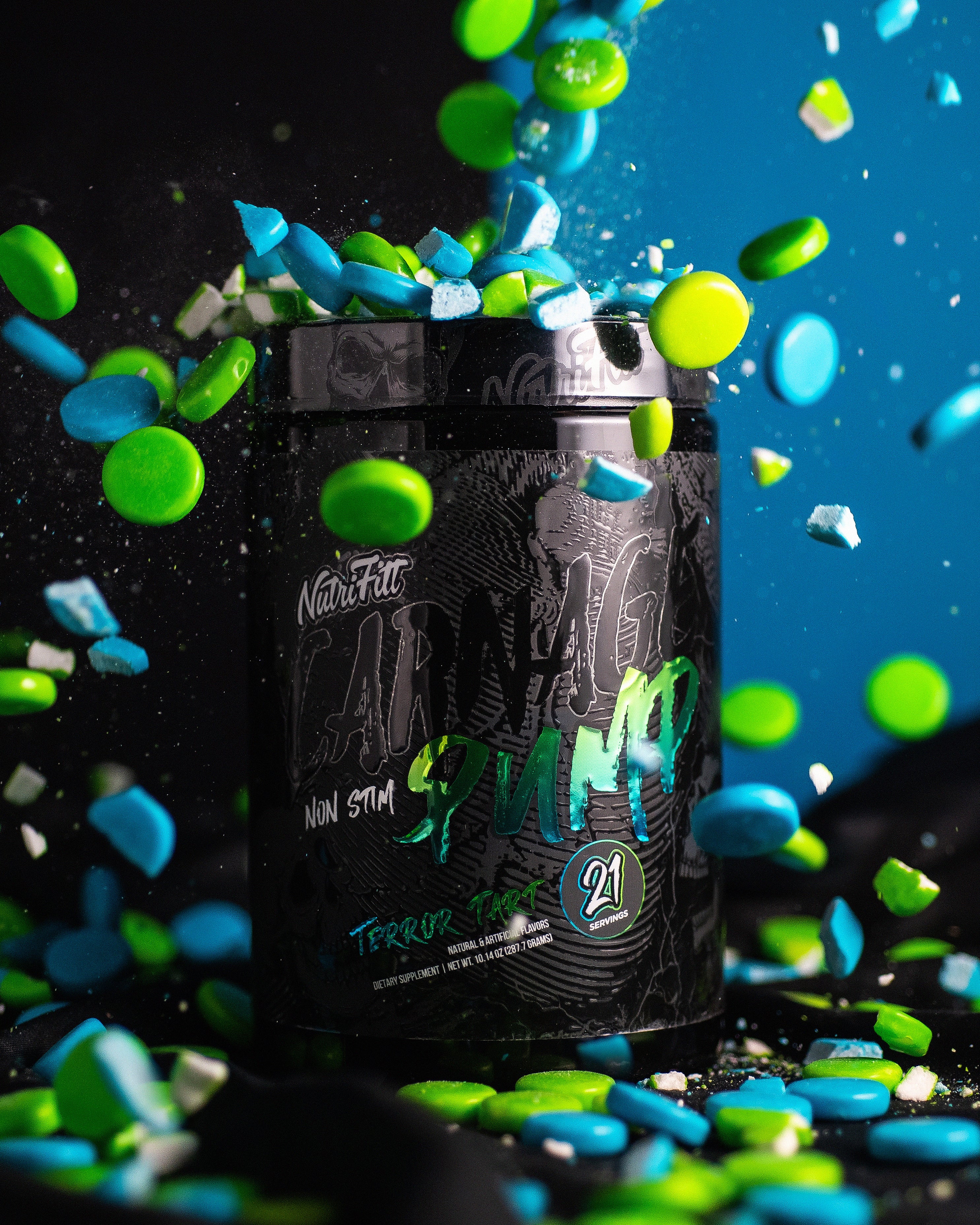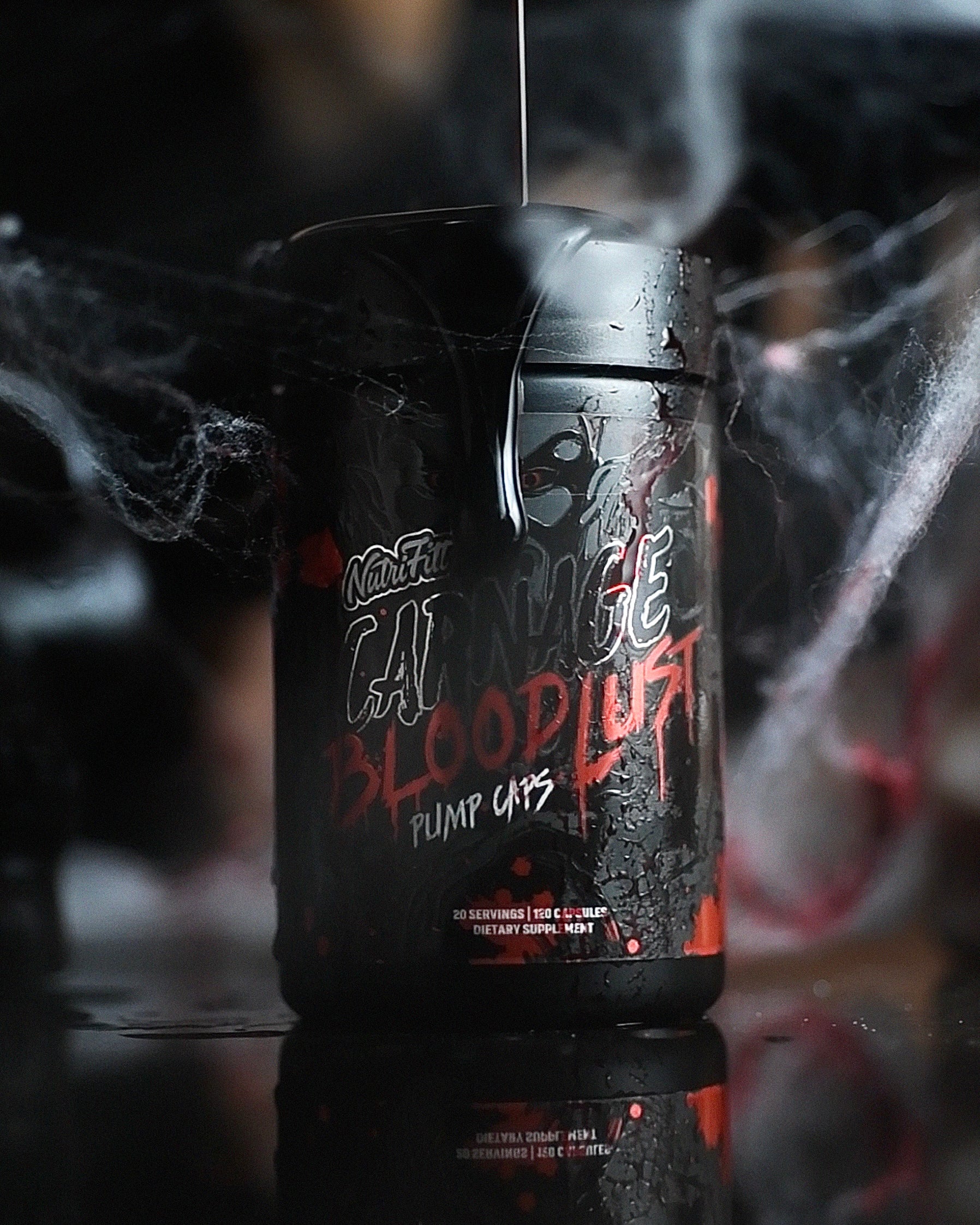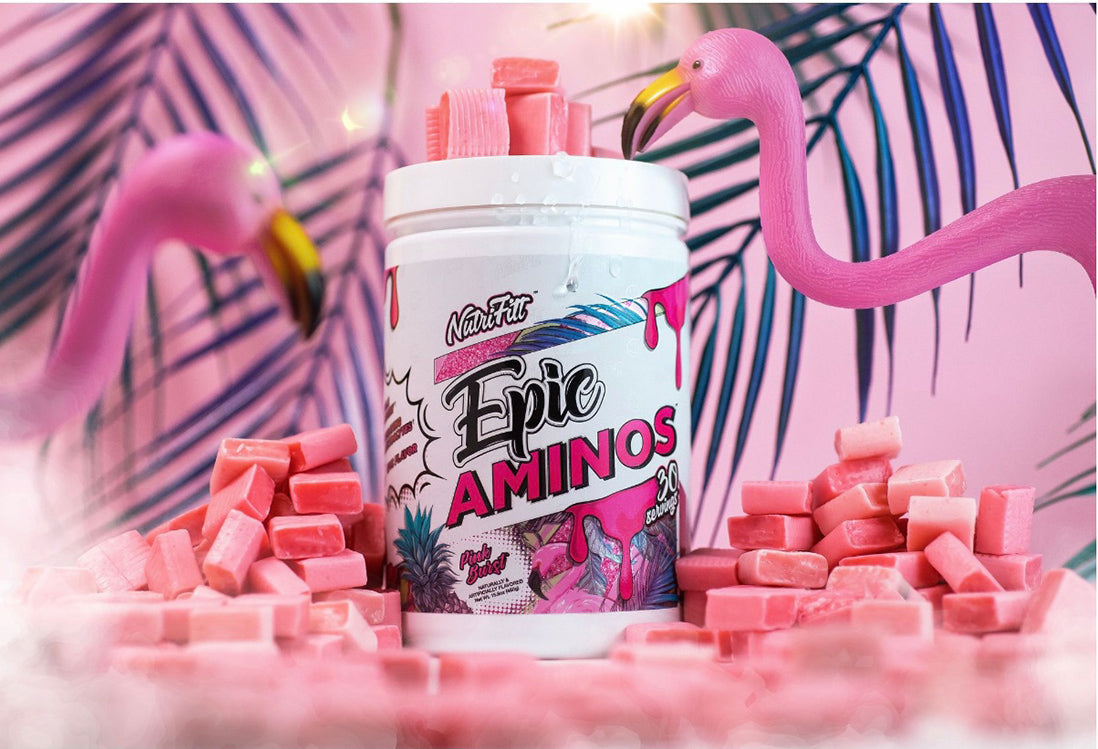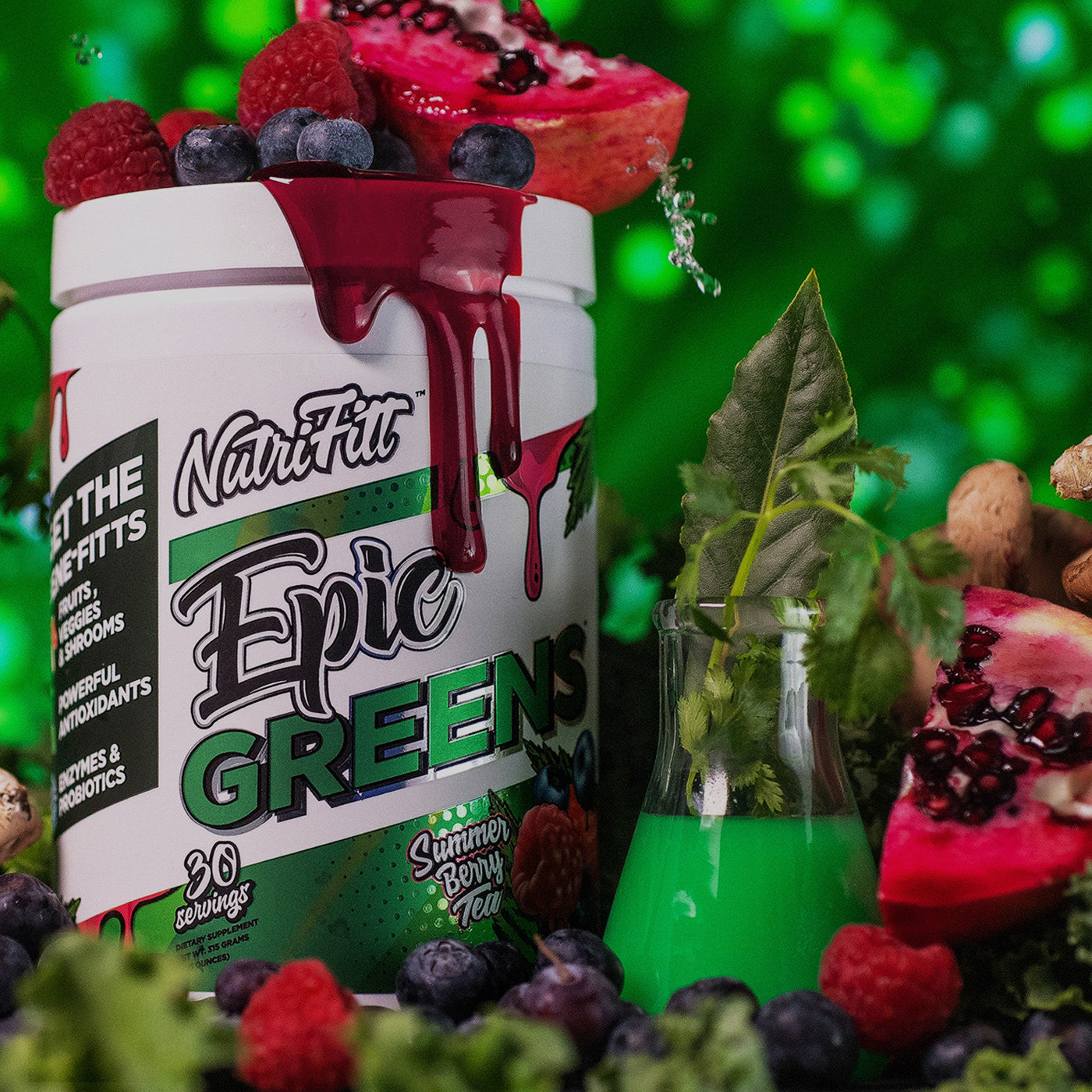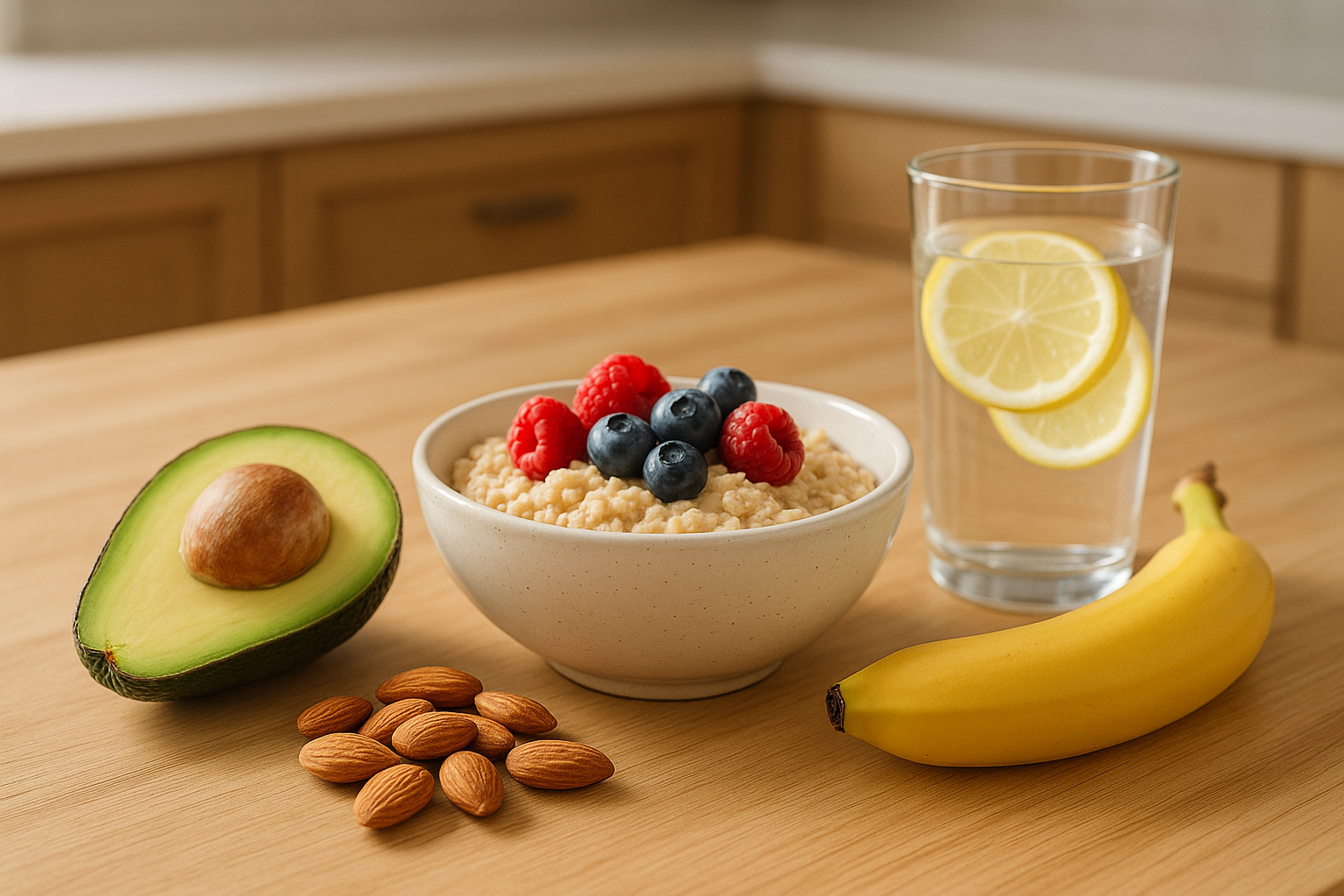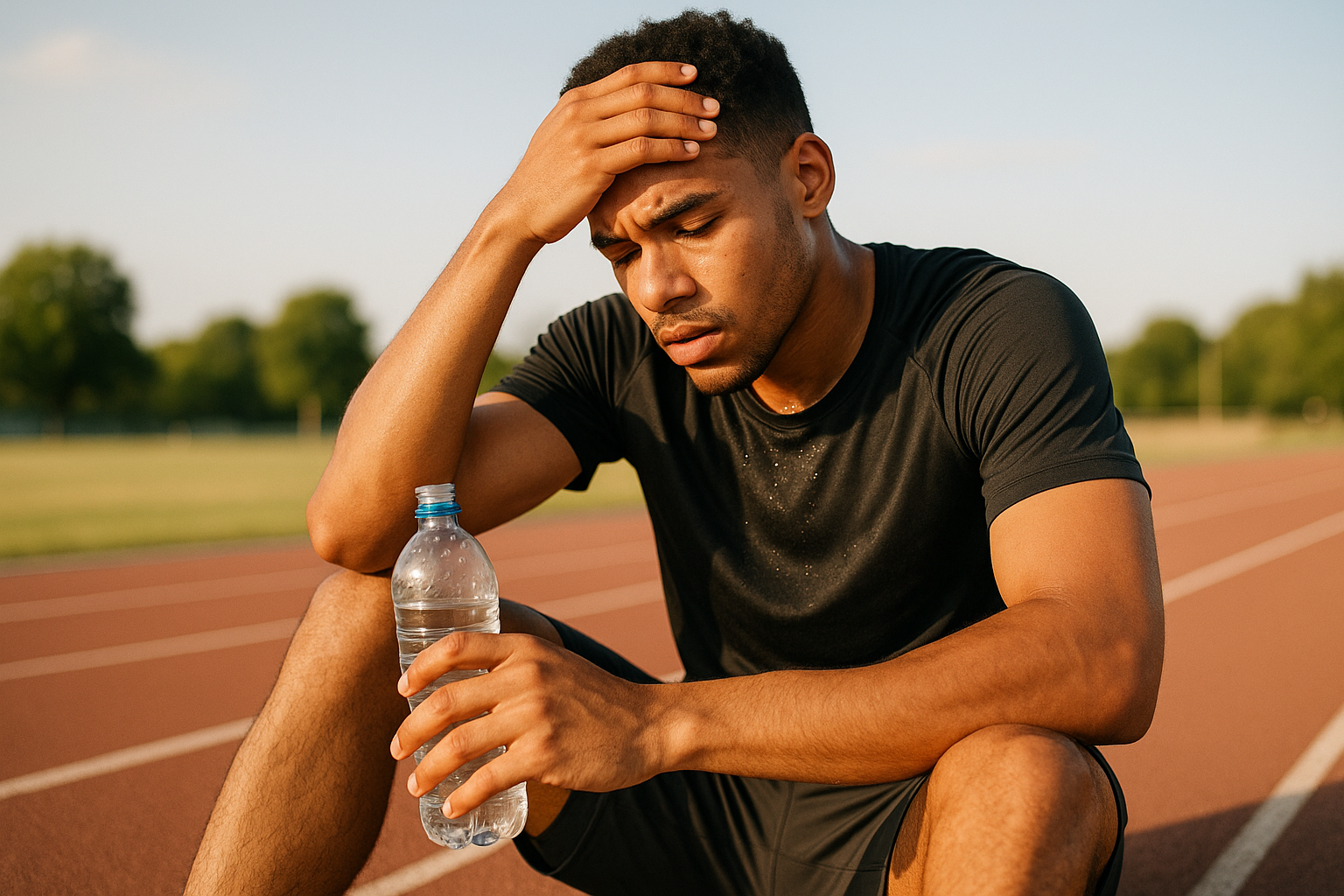
Signs of Electrolyte Imbalance in Athletes
Electrolyte imbalances can harm athletic performance and health. Symptoms like muscle cramps, fatigue, dizziness, and irregular heartbeat signal your body needs attention. Athletes lose vital electrolytes - sodium, potassium, magnesium, calcium, and phosphate - through sweat, especially during intense or prolonged activity. Without proper replenishment, you might face reduced performance, confusion, or even severe complications like seizures or collapse.
Key Takeaways:
- Common Symptoms: Muscle cramps, fatigue, nausea, dizziness, headaches, and palpitations.
- Severe Risks: Seizures, unconsciousness, or heart complications.
- Prevention Tips: Hydrate before, during, and after exercise. Use electrolyte drinks for workouts over 60 minutes. Monitor weight changes and urine color for hydration levels.
- Recovery: Replace lost fluids and electrolytes within 6 hours post-exercise.
Stay ahead of the signs to maintain peak performance and avoid health risks.
1. Muscle cramps and spasms
Muscle cramps and spasms are often the first indicators that your electrolyte levels might be out of sync. These sudden, painful, and uncontrollable muscle contractions can occur during or after intense physical activity, leaving athletes in discomfort. The root cause? An electrolyte imbalance that disrupts proper muscle function.
When you sweat, your body loses essential electrolytes like sodium, which are crucial for muscle contraction and relaxation. Without these, muscles can’t function smoothly. Prolonged exercise and reduced fluid levels around muscle fibers only increase the likelihood of these painful cramps.
Heat makes things even worse. Research shows that 95% of cramps among football players occur during the hot months when they’re exercising in high-risk heat conditions. Similarly, miners working in humid, sweltering environments often experience cramps due to excessive sweat loss.
Drinking plain water without replacing lost electrolytes can further throw off this delicate balance. This is because water alone doesn’t replenish the sodium and other electrolytes lost through sweat, worsening the imbalance.
To put it into perspective, extended exercise can lead to a loss of 13–17 grams of salt, as sweat typically contains about 2.3–3.4 grams of salt per liter. High sweat rates also interfere with the body’s ability to reabsorb sodium, making cramps almost unavoidable.
If cramps strike, relief can often be found by consuming a 16-ounce carbohydrate–electrolyte drink containing around 3.0 grams of salt within 5–10 minutes. For those prone to cramping, adding 0.3 to 0.7 grams of salt per liter to their hydration routine during exercise can help prevent these painful episodes.
Think of early cramps as your body’s alarm system, signaling the need to address electrolyte imbalances before they lead to more serious complications.
2. Fatigue and Sluggishness
After cramps, fatigue is another clear sign that something might be off. When your electrolyte levels drop, your body struggles to produce the energy it needs, leaving you feeling persistently tired and sluggish. This energy dip underscores just how critical electrolytes are for keeping your cells functioning properly.
Electrolytes play a big role in maintaining cell balance and sparking nerve and muscle activity. When these vital minerals are out of balance, your body can’t carry out its basic tasks efficiently, which can lead to ongoing fatigue.
The difference between regular post-workout fatigue and fatigue caused by low electrolytes is in the details. Normal fatigue usually fades with rest, but electrolyte-related fatigue sticks around. It often comes with other symptoms like muscle cramps, nausea, or even mental fog.
For endurance athletes, the risks are even greater. During long events, losing 7.8–8.5 kg (17–19 lbs) of water - or more than 2% of your body weight - signals dehydration and significant electrolyte loss, which can seriously hurt your performance. That’s why it's a good idea to monitor your weight before and after exercise. If you’ve lost more than 2% of your body weight, it could mean you’re dehydrated and running low on electrolytes.
To fight fatigue, focus on hydration and electrolyte balance. Start by hydrating before exercise, keep up with electrolyte intake during your workout, and make sure you recover properly afterward. For sessions lasting over an hour, look for drinks with 300–500 mg of sodium per serving. Since the human body is about 60% water for men and 55% for women [12], staying hydrated is essential to keeping everything - from your muscles to your brain - working as it should. These steps can help you stay energized and perform at your best.
3. Headache and Mental Confusion
When your electrolyte levels are out of balance, your brain feels the impact too. Headaches and mental confusion often serve as early warning signs that something is off and shouldn't be overlooked.
Since the brain is about 75% water, it’s incredibly sensitive to changes in fluid and electrolyte levels. When essential minerals like sodium, potassium, magnesium, or calcium stray from their normal ranges, the brain’s electrical activity can be disrupted. This interference often leads to cognitive struggles, especially during or after physical activity.
One of the most common culprits is hyponatremia, or low sodium levels.When sodium drops too much, brain cells can swell, which may result in headaches, nausea, and mental fog.
"The idea is that you're drinking fluids with no salt and drinking them faster than you can pee or sweat them out. You dilute your blood." - Sean Langan, Associate Research Director at the University of Connecticut's Korey Stringer Institute
Electrolyte imbalances can also show up as trouble focusing, memory lapses, irritability, or even disorientation. Surprisingly, even mild dehydration - losing just 2% of your body weight - can impair tasks that require focus and short-term memory.
If you notice headaches or mental fog during or right after exercise, especially in hot conditions, an electrolyte imbalance could be to blame. Sodium, which accounts for about 47.4% of the electrolytes lost through sweat, makes endurance athletes particularly vulnerable during long training sessions.
To help prevent these symptoms, it’s crucial to stay ahead with smart hydration. For longer workouts, try alternating between water and electrolyte drinks rather than sticking to plain water. Also, include foods rich in electrolytes in your diet - like bananas for potassium, leafy greens for magnesium, and dairy for calcium - to keep your brain functioning at its best.
4. Nausea and Vomiting
Nausea and vomiting are major signs of electrolyte imbalance, affecting anywhere from 20% to 70% of athletes. These symptoms are also among the top reasons athletes drop out of endurance events.
When sodium levels in the body fluctuate outside their normal range, it can lead to nausea and vomiting. This happens because electrolyte imbalances disrupt essential bodily functions, often showing up as gastrointestinal distress. Dehydration plays a key role here - it triggers the release of arginine vasopressin (AVP), a hormone that directly contributes to nausea. This explains why athletes frequently experience stomach issues during intense training or competitions, especially in hot weather. These digestive problems not only make athletes feel miserable but also impact their performance, emphasizing the importance of managing electrolytes effectively.
The numbers from endurance events highlight how widespread this issue is. For instance, during the 2014 Western States Endurance Run - a grueling 100-mile race - 60% of surveyed athletes reported nausea, and 25% experienced vomiting at some point. These symptoms were the leading causes of dropouts in 100-mile ultra-running events.
Marathon runners face similar challenges. Studies show that up to 83% of runners link gastrointestinal symptoms to their performance. This creates a vicious cycle: electrolyte imbalances cause nausea and vomiting, which lead to further losses of electrolytes and fluids, worsening the original problem.
"When you have excessive diarrhea, your body loses vital electrolytes like potassium, sodium, and bicarbonate. When you throw up, it causes a loss of fluids, stomach contents, and electrolytes like potassium as well." - Samia Kadri, Family Nurse Practitioner, Banner Urgent Care
Nausea caused by electrolyte issues often comes with other symptoms like headache, dizziness, confusion, swelling in the hands or feet, and unexpected weight gain [16]. If you notice these warning signs, especially during or after exercise, it’s a strong indicator of an electrolyte imbalance.
"Stop drinking if you feel bloated or nauseous." - Grant Lipman, MD, Professor of Emergency Medicine at Stanford and Director of Stanford Wilderness Medicine
Preventing nausea and vomiting starts with maintaining a proper balance of fluids and electrolytes. The goal is to avoid both dehydration and overhydration. To manage this during prolonged exercise, aim to prevent body mass losses greater than 2–3%, but avoid drinking more than 25–33 fluid ounces (750–1,000 mL) per hour. Recognizing and addressing the signs early can make all the difference.
5. Irregular Heartbeat and Palpitations
Heart palpitations - those fluttering, pounding, or racing sensations in your chest - can often point to an electrolyte imbalance, especially in athletes. These episodes might feel like your heart is skipping beats or racing too fast, and they can happen whether you're at rest or in the middle of physical activity.
Electrolytes like sodium, potassium, calcium, and magnesium aren't just important for your muscles; they also play a critical role in keeping your heart's rhythm steady. These minerals help regulate the electrical impulses that control heart contractions. When their levels are off, it can disrupt the heart's electrical system, leading to irregular beats or palpitations.
For instance, potassium levels that are too high or too low can throw off the heart's delicate rhythm. Magnesium deficiency adds to the problem, as it interferes with the balance of potassium and calcium, increasing the risk of severe arrhythmias.
Endurance athletes are particularly at risk. Studies show they have a two- to tenfold higher chance of developing atrial fibrillation or flutter. Alarmingly, the risk of atrial fibrillation increases by 16% and atrial flutter by 42% for every decade of regular endurance training. These risks are heightened during intense workouts, where fluid shifts and dehydration can lead to significant electrolyte losses.
Electrolyte imbalances not only cause arrhythmias but can also complicate recovery if they escalate to cardiac arrest. Early detection of these imbalances is crucial.
"When treating congestive heart failure, one must consider how to prevent depletion of electrolytes or how to replete potassium and magnesium in deficiency states." - Authors of a 1992 study published in Methods and Findings in Experimental and Clinical Pharmacology
If you find yourself experiencing heart palpitations during or after exercise - especially if they come with fainting or shortness of breath - it’s essential to get checked out immediately. These could be signs of an electrolyte imbalance or another underlying issue.
sbb-itb-7567710
6. Dizziness and Lightheadedness
Feeling like the world is spinning or that you might faint during or after a workout is more than just an annoyance - it could be a sign that your electrolytes are out of balance, a common issue for athletes.
One major culprit? Dehydration. When you sweat excessively and don’t replace those lost fluids, your blood volume decreases. This drop leads to lower blood pressure and reduced blood flow to your brain, which can leave you feeling lightheaded or dizzy. Even losing just 2-4% of your body weight in fluids can significantly weaken your endurance performance. On top of that, this fluid loss can disrupt nerve and muscle functions, further contributing to dizziness.
But too much water can be just as problematic. Drinking excessive amounts without replenishing electrolytes can dilute the sodium in your blood, leading to hyponatremia. This condition causes your cells to swell, which can trigger dizziness, particularly when sodium levels fall to around 130-135 mmol Na⁺/L.
It’s important to distinguish electrolyte-related dizziness from dizziness caused by other issues, like inner-ear problems. While inner-ear conditions often bring vertigo, dizziness from electrolyte imbalances is usually paired with symptoms like fatigue, muscle weakness, or nausea. If you’re unsure, an electrolyte panel blood test can help assess your mineral levels.
"Note that dizziness differs from lightheadedness; many report 'dizziness' when they mean 'lightheadedness'"
How to Stay Ahead of Dizziness
The best way to avoid dizziness is to stay proactive about hydration. During exercise, limit your fluid intake to 700 mL per hour to prevent overhydration [13]. For sessions lasting over 90 minutes or in hot conditions, choose electrolyte-replacement drinks instead of plain water. A quick hydration check? Look at your urine color - it should be a pale, straw-yellow shade.
"By the time you actually feel thirsty, it's too late ― you're already too low on fluids." - Rayven Nairn, M.S., R.D., L.D.
If dizziness does strike, act quickly. Stop exercising immediately, sit down, and place your head between your knees. Take slow, deep breaths and sip water or an electrolyte drink until the symptoms ease. Applying a cool cloth to your forehead can also help.
"Prevention is key here. Get adequate hydration throughout the day, not just right before exercise. Build up your exercise intensity slowly. Make sure you get enough nutrition and calories throughout the day." - Caroline Schepker, DO
7. Muscle weakness
Experiencing sudden muscle weakness during exercise can be a red flag for an electrolyte imbalance. This type of weakness goes beyond the usual post-workout fatigue and requires attention.
Electrolytes like sodium, potassium, chloride, calcium, and magnesium are essential for muscle contraction. When levels of these key minerals drop too low, even the most seasoned athletes can feel their strength wane. This isn’t the typical tiredness that fades with rest - it’s a persistent weakness that signals something deeper.
For example, when potassium levels fall below 3.6 mEq/L, a condition called hypokalemia can occur. This can lead to weakness, fatigue, and even muscle twitching. Potassium plays a critical role in transmitting nerve signals to muscles, so a deficiency disrupts this process.
Magnesium is another crucial player. Normal magnesium levels range between 1.7 and 2.5 mg/dL. When magnesium dips below this range, you may experience not only weakness but also twitching and a lack of muscle control. In many cases, low magnesium levels quietly undermine muscle performance without obvious warning signs.
"Electrolytes are a health essential." - Lynne Braun, PhD, CNP, Nurse Practitioner with the Rush Heart Center for Women
Electrolyte-related muscle weakness often develops gradually, with subtle warning signs appearing before the condition worsens. Unlike the fatigue that improves with rest, this type of weakness lingers until the electrolyte imbalance is corrected.
Quick Action Steps
If you notice unusual muscle weakness during or after exercise, act quickly. Stop your activity and consider your electrolyte levels - especially if you’re also experiencing cramping or twitching. Rehydrate with electrolyte-rich drinks or oral rehydration solutions instead of plain water. Look for sugar-free or low-sugar options to replenish minerals without unnecessary calories. Remember, all five electrolytes - sodium, potassium, chloride, calcium, and magnesium - are essential for optimal muscle function. If symptoms persist or worsen, consult a healthcare professional promptly.
8. Severe symptoms: seizures, coma, or collapse
Serious electrolyte imbalances can lead to life-threatening complications that demand immediate medical attention.
Seizures
Both low sodium (hyponatremia) and high sodium levels (hypernatremia) can provoke seizures in athletes. Low calcium levels may also play a role, often accompanied by muscle spasms and difficulty breathing. For example, a 49-year-old marathon runner experienced a grand mal seizure after completing a 26.2-mile race and a subsequent flight. His serum sodium level was 129 mmol/L, which led to cerebral edema, pulmonary edema, kidney and liver complications, and long-term cognitive issue.
Collapse and Loss of Consciousness
Electrolyte imbalances can severely impact brain and heart function, potentially causing collapse or unconsciousness. In one instance, a 35-year-old Ironman triathlete collapsed and had generalized seizures immediately after finishing his race. His sodium concentration had plummeted to a critical 116 mmol/L. He required intensive care for recurring seizures but eventually recovered fully.
Cardiac Complications
Severe imbalances can also trigger dangerous heart problems. Extremely high magnesium levels, for instance, may lead to bradycardia, arrhythmias, shallow breathing, or even cardiac arrest. The heart's electrical activity depends on a delicate electrolyte balance, and significant disruptions can have devastating consequences. These critical symptoms call for immediate medical intervention.
Since 1985, there have been 14 recorded deaths linked to exercise-associated hyponatremia. Dr. Grant Lipman, a Professor of Emergency Medicine at Stanford and Director of Stanford Wilderness Medicine, underscores the seriousness of these conditions:
"Most athletes worry about dehydration, but that won't kill you. There have been multiple deaths from EAH, not only among endurance athletes but among military, football players and half-marathoners, as well."
Early symptoms such as confusion, muscle weakness, irregular heartbeat, or persistent nausea often precede these severe complications.
Emergency Recognition and Response
Severe symptoms like seizures, collapse, or unconsciousness typically follow earlier warning signs, including confusion, significant muscle weakness, rapid or irregular heartbeat, or ongoing nausea. Neurological symptoms - such as altered mental state, seizures, or loss of consciousness - require immediate emergency care. These signs are unusual and may indicate an electrolyte imbalance rather than heat stroke. If someone experiences seizures or collapses, act quickly: call emergency services immediately to ensure they receive the urgent care they need.
Symptom Reference Table
Recognizing symptoms early can make a huge difference in avoiding performance issues and serious health risks during athletic activities. The table below links common symptoms to potential electrolyte imbalances and highlights when medical attention is necessary.
| Symptom | Associated Electrolyte(s) | When to Seek Medical Attention |
|---|---|---|
| Muscle cramps/spasms | Sodium, Potassium, Magnesium | If persistent, severe, or accompanied by weakness |
| Fatigue/sluggishness | Sodium, Potassium, Magnesium | If unrelieved by rest or fluids |
| Headache/mental confusion | Sodium, Potassium | If confusion is severe or sudden |
| Nausea/vomiting | Sodium, Potassium | If persistent or with other severe symptoms |
| Irregular heartbeat/palpitations | Potassium, Magnesium | Immediately if heart rhythm is abnormal |
| Dizziness/lightheadedness | Sodium, Potassium | If fainting or unable to stand |
| Muscle weakness | Sodium, Potassium, Magnesium | If severe or sudden onset |
| Seizures/coma/collapse | Sodium, Potassium, Magnesium | Immediate emergency care required |
This table offers a straightforward way to assess symptoms on the spot, helping athletes and trainers make informed decisions.
Key Points for Athletes:
The symptoms listed above often overlap across different electrolyte imbalances, making it crucial to evaluate the context and severity. For example, muscle cramps might result from sodium loss during a sweaty workout, while weakness developing over days could point to potassium depletion caused by inadequate nutrition.
Pay close attention to the intensity of symptoms. Mild fatigue that improves with hydration and rest is usually manageable. However, more serious signs - like confusion, irregular heartbeat, or fainting - should be addressed immediately by a healthcare professional.
The most urgent symptoms, such as seizures, collapse, or coma, require emergency medical attention without delay.
Practical Application:
This table can serve as a quick reference during training or competition. Spotting early signs like mild dizziness or cramping allows you to act promptly - rehydrating and replenishing electrolytes to prevent the situation from escalating.
For athletes in demanding training programs, a well-balanced electrolyte supplement, like those offered by NutriFitt, can help maintain optimal levels and enhance performance.
How to Prevent and Manage Electrolyte Imbalance
Understanding the symptoms of an electrolyte imbalance is just the beginning. To stay at your best, a proactive approach to prevention is key. This means focusing on hydration and nutrition well before, during, and after physical activity. Here's how to manage it effectively.
Pre-Exercise Preparation
Hydration starts long before your workout. Aim to drink 5–7 ml of fluid per kilogram of body weight at least four hours before exercising. For someone weighing 150 pounds (68 kg), this translates to about 11–16 ounces of fluid. If your urine is dark or you haven’t urinated in the two hours leading up to your workout, add an extra 3–5 ml per kilogram of fluid slowly to your intake.
Adding sodium to your pre-workout routine can help your body retain fluids and stimulate thirst. A pinch of sea salt in your water or sodium-rich foods like broths and dairy can be helpful.
During Exercise Management
For activities lasting over an hour, it's important to stay ahead of fluid and electrolyte losses. Sip 3–8 ounces (90–240 ml) of a 6–8% carbohydrate-electrolyte drink every 10–20 minutes. This helps prevent fluid loss exceeding 2% of your body weight, which can impact performance, especially in hot or even temperate conditions.
Sweat can cause runners to lose anywhere from 500 to 2,000 mg of sodium per liter, so rely on regular, smaller sips of electrolyte beverages rather than consuming large amounts all at once.
Post-Exercise Recovery
After exercise, your body needs to replenish fluids and electrolytes quickly. Drink 150% of the fluid lost during your workout within six hours. For every pound of body weight lost, this means consuming 16–24 ounces of fluid. Water alone might not cut it - pair it with sports drinks or electrolyte-rich foods to restore sodium and chloride levels effectively.
Monitoring Your Hydration Status
Keeping tabs on your hydration is crucial. Check your urine - pale yellow every 1–2 hours is a good sign of proper hydration, while darker or less frequent urination suggests you need more fluids. Weighing yourself before and after training can also help. If you lose more than 1.5 liters per hour, it may indicate the need for a more aggressive electrolyte replacement plan.
Choosing the Right Electrolyte Support
When picking an electrolyte supplement, look for options with at least 300 mg of sodium per serving. For exercise, drinks containing 20–60 grams of carbohydrates and 200–1,000 mg of sodium per serving are particularly effective. Products like NutriFitt's EPIC Electrolytes ($37.99) and EPIC Aminos ($39.99) combine hydration support with muscle recovery benefits [45][47].
Natural Food Sources for Electrolyte Balance
You can also get electrolytes from everyday foods. Include potassium-rich choices like bananas, sweet potatoes, and avocados in your diet. Add magnesium through leafy greens, nuts, seeds, and dark chocolate. For calcium, turn to dairy products, fortified plant-based milks, or leafy greens.
Environmental Considerations
Hot and humid conditions can increase your electrolyte needs significantly. You may lose up to 2 quarts of fluid per hour in such conditions, and endurance activities can push that to 3 quarts per hour. Adjust your intake accordingly, and consider preloading electrolytes the day before a competition if extreme weather is expected.
Individual Customization
Electrolyte needs vary from person to person, so it’s important to experiment with different hydration strategies during training. Some athletes find alternating between water and electrolyte drinks works best, while others prefer consistent electrolyte intake throughout their workout.
"Even if you don't sweat a lot, you lose electrolytes when you breathe rapidly. So sweaty or not, choose a drink with electrolytes after vigorous exercise." – Lynne Braun, PhD, CNP
Conclusion
Muscle cramps, fatigue, dizziness, and confusion are your body's way of signaling an electrolyte imbalance - an issue that can lead to serious complications if ignored. During intense physical activity, it's possible to lose up to 3 quarts of fluid per hour, and even a modest 2–4% drop in body weight from fluid loss can significantly reduce performance. These numbers highlight the fine line between performing at your best and jeopardizing your health.
"Dehydration is a heavy hitter when it comes to athletic performance", says Rayven Nairn, M.S., R.D., L.D., a dietitian with the Johns Hopkins University Student Health and Wellness Center.
Electrolyte imbalances don’t just impact athletic performance - they affect nearly every system in your body, from muscle contractions to nerve signaling and heart function. Spotting early signs like cramping or disorientation allows you to adjust your hydration plan before minor issues turn into health emergencies. This makes electrolyte management a critical part of any training routine.
For serious athletes, prevention is key. Strategies like checking urine color, keeping track of fluid loss, and maintaining adequate sodium intake should become second nature when you understand the risks involved. Your electrolyte levels directly influence your ability to train, recover, and compete safely.
The symptoms discussed - whether mild fatigue or more serious neurological concerns - act as your body's early warning system. Learning to recognize and respond to these signals can help you avoid performance setbacks and long-term health risks.
"Hydration during a game, tournament, or workout - not just before and after - is often overlooked by athletes and their trainers. But performance depends on it. Dehydration increases the risk of headaches, cramping, and even serious conditions like heat stroke", explains Rayven Nairn, M.S., R.D., L.D..
Electrolyte balance isn’t just a detail - it’s the foundation of peak performance and overall well-being. Whether you're training for a marathon, competing in team sports, or pushing through high-intensity workouts, managing your electrolytes is essential to staying strong, healthy, and competitive.
FAQs
What are the best ways for athletes to monitor their electrolyte levels during training or competition?
Athletes have a few straightforward ways to keep an eye on their electrolyte levels. One simple method is checking the color of their urine - pale yellow usually signals good hydration. Another approach is stepping on the scale before and after exercise; a noticeable drop in weight often means fluid loss. For a more precise look at sodium loss, sweat testing strips can come in handy, especially during intense workouts. And if you want an even deeper dive into hydration, tools like urine-specific gravity tests can offer more detailed insights.
Maintaining electrolyte balance is key to staying at the top of your game. By using these methods, you can help prevent fatigue, muscle cramps, and other issues caused by imbalance, ensuring you're always ready to perform at your best.
How can athletes prevent electrolyte imbalances in different weather conditions?
Staying on top of your hydration and nutrition game is essential for avoiding electrolyte imbalances, especially for athletes dealing with varying weather conditions. When it's hot, sweat can lead to significant electrolyte loss. To counter this, reach for electrolyte-packed drinks or snacks to keep dehydration, fatigue, and muscle cramps at bay. On the flip side, in cooler weather, while hydration is still important, it's equally critical to avoid overhydrating, which can disrupt your body's electrolyte balance.
Pay attention to your thirst signals, adjust your electrolyte intake to fit the intensity of your activity, and consider the environment you're in. By staying mindful and proactive, you can maintain peak performance and recovery, no matter the temperature or conditions.
How does an electrolyte imbalance affect mental clarity and brain function in athletes?
Electrolyte imbalances can throw off mental clarity and brain function in athletes by disrupting the delicate balance of key minerals like sodium and potassium. These minerals are essential for proper nerve signaling and cognitive performance. When their levels dip or spike, athletes might notice symptoms such as confusion, dizziness, fatigue, and trouble focusing.
In more serious situations, these imbalances can lead to poor decision-making, slower reaction times, and even severe issues like seizures. Staying properly hydrated and keeping electrolyte levels in check is essential to ensure both the body and mind perform at their best during athletic activities.





